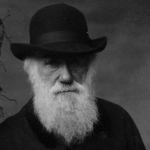From Genomes to the Diversity of Life

12 ปี
19.9K Views
ประเภท:
ลักษณะ:
Abstract
Publication of the human genome sequence in 2001 represented the culmination of a multi-million dollar international effort. But since then, the cost of sequencing DNA has fallen more than 10,000 fold, and it is now possible to sequence the genomes of organisms representing the great diversity of life on earth. Already, complete genome sequences are available for animals as diverse as sea anemones and centipedes, as well as for literally thousands of different bacteria and other microorganisms. These genomes contain not just the instruction sets for making life work today, but also a rich record of the history of life. I will discuss what we can and cannot read in genome sequences. I will describe some of the surprising relationships among living organisms that have been revealed by comparing genomes, and I will consider what the study of genomes can tell us about the process by which single celled organisms evolved into complex multicellular animals.
Biography
Michael Akam took his first degree in Zoology at Cambridge, where the influence of Sidney Brenner and Peter Lawrence kindled his interest in developmental genetics and pattern formation. As a graduate student in Oxford he identified and mapped genes encoding the larval blood proteins of the fruit fly Drosophila. After a brief flirtation with nematodes at the Laboratory for Molecular Biology in Cambridge, he moved to the Department of Biochemistry at Stanford in 1979, where he participated in the first isolation, from Drosophila, of the developmental control genes known as Hox genes, and in the development of techniques for localizing gene expression in the tiny embryos of these flies. Returning to the Genetics Department in Cambridge in 1982, he was able to show for the first time that Hox genes were expressed at specific positions along the body axis. He has since worked on many aspects of the functional organisation of Hox genes in fruit flies and other species.
Over the last twenty years he has exploited our growing knowledge of developmental genetics to study the genetic basis for animal diversity. His particular interests are the diversity of embryonic patterning mechanisms among arthropods, and the control of body plans by Hox genes. His current passion is for the embryos of centipedes, and the biology of segment formation. He is coordinating a centipede genome project.
In 1989, he moved as a founding member to the Wellcome/CRC Institute for Cancer and Developmental Biology in Cambridge. In 1997 he became Director of the University Museum of Zoology, where he established a laboratory for the Study of Development and Evolution. He relinquished this post in 2010 to become Professor of Zoology and Head of the Department of Zoology. He has been a Fellow of Darwin College since 2006.
Publication of the human genome sequence in 2001 represented the culmination of a multi-million dollar international effort. But since then, the cost of sequencing DNA has fallen more than 10,000 fold, and it is now possible to sequence the genomes of organisms representing the great diversity of life on earth. Already, complete genome sequences are available for animals as diverse as sea anemones and centipedes, as well as for literally thousands of different bacteria and other microorganisms. These genomes contain not just the instruction sets for making life work today, but also a rich record of the history of life. I will discuss what we can and cannot read in genome sequences. I will describe some of the surprising relationships among living organisms that have been revealed by comparing genomes, and I will consider what the study of genomes can tell us about the process by which single celled organisms evolved into complex multicellular animals.
Biography
Michael Akam took his first degree in Zoology at Cambridge, where the influence of Sidney Brenner and Peter Lawrence kindled his interest in developmental genetics and pattern formation. As a graduate student in Oxford he identified and mapped genes encoding the larval blood proteins of the fruit fly Drosophila. After a brief flirtation with nematodes at the Laboratory for Molecular Biology in Cambridge, he moved to the Department of Biochemistry at Stanford in 1979, where he participated in the first isolation, from Drosophila, of the developmental control genes known as Hox genes, and in the development of techniques for localizing gene expression in the tiny embryos of these flies. Returning to the Genetics Department in Cambridge in 1982, he was able to show for the first time that Hox genes were expressed at specific positions along the body axis. He has since worked on many aspects of the functional organisation of Hox genes in fruit flies and other species.
Over the last twenty years he has exploited our growing knowledge of developmental genetics to study the genetic basis for animal diversity. His particular interests are the diversity of embryonic patterning mechanisms among arthropods, and the control of body plans by Hox genes. His current passion is for the embryos of centipedes, and the biology of segment formation. He is coordinating a centipede genome project.
In 1989, he moved as a founding member to the Wellcome/CRC Institute for Cancer and Developmental Biology in Cambridge. In 1997 he became Director of the University Museum of Zoology, where he established a laboratory for the Study of Development and Evolution. He relinquished this post in 2010 to become Professor of Zoology and Head of the Department of Zoology. He has been a Fellow of Darwin College since 2006.


